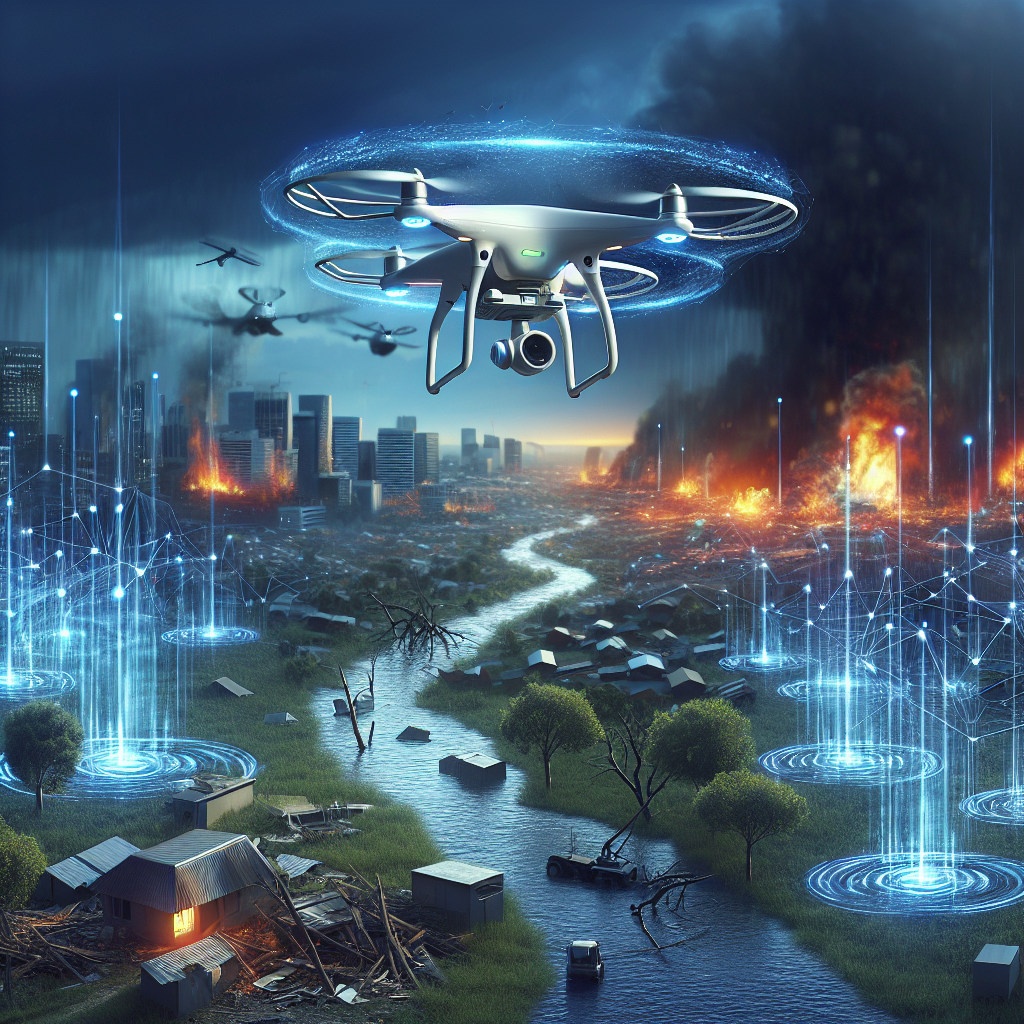In recent years, the world has seen an increase in the frequency and severity of natural disasters such as hurricanes, earthquakes, wildfires, and floods. These disasters have devastating effects on communities, causing loss of life, destruction of infrastructure, and displacement of populations. In order to effectively respond to these disasters and mitigate their impact, it is essential to leverage advanced technologies such as artificial intelligence (AI).
AI is revolutionizing the way we approach disaster response and recovery efforts. By harnessing the power of AI, emergency response teams are able to make quicker, more informed decisions, allocate resources more effectively, and coordinate response efforts more efficiently. In this article, we will explore how AI is being used to enhance disaster response and recovery, and how it can be leveraged to create more sustainable and resilient communities.
One of the key ways in which AI is being used in disaster response is through predictive analytics. By analyzing large amounts of data from various sources such as weather patterns, topography, population density, and infrastructure, AI algorithms can help predict when and where disasters are likely to occur. This information is crucial for early warning systems, allowing authorities to evacuate people from high-risk areas and deploy resources to those most in need.
For example, in the case of hurricanes, AI-powered models can predict the path and intensity of the storm, enabling emergency responders to prepare for potential flooding, power outages, and other hazards. Similarly, in the case of wildfires, AI algorithms can analyze satellite imagery and weather data to predict the spread of the fire and identify areas that are most at risk.
Another way in which AI is being used in disaster response is through image recognition technology. By analyzing satellite images, drone footage, and social media posts, AI algorithms can identify damaged buildings, blocked roads, and other obstacles that may impede rescue and recovery efforts. This information can help emergency responders prioritize their actions, allocate resources more effectively, and plan evacuation routes.
In addition to predictive analytics and image recognition, AI is also being used to improve communication and coordination among different agencies involved in disaster response. By using natural language processing and machine learning algorithms, AI systems can analyze and categorize incoming information from various sources such as emergency calls, social media posts, and news reports. This allows emergency responders to quickly identify key information, such as the location of survivors, the status of infrastructure, and the availability of resources.
Furthermore, AI-powered chatbots and virtual assistants can help disseminate important information to the public, answer frequently asked questions, and provide real-time updates on the situation. This not only helps keep people informed and safe during a disaster but also reduces the burden on emergency call centers and first responders.
In addition to enhancing the efficiency and effectiveness of disaster response efforts, AI can also play a key role in building more sustainable and resilient communities. By analyzing historical data on past disasters, AI algorithms can identify patterns and trends that can help policymakers and urban planners make informed decisions about land use, infrastructure development, and emergency preparedness.
For example, AI models can analyze flood maps, earthquake risk assessments, and population density data to identify areas that are most vulnerable to disasters. This information can inform zoning regulations, building codes, and infrastructure investments to reduce the impact of future disasters and protect vulnerable populations.
Furthermore, AI can be used to optimize resource allocation and logistics during a disaster. By analyzing real-time data on the availability of food, water, shelter, and medical supplies, AI algorithms can help emergency responders prioritize their actions, deploy resources to where they are most needed, and minimize waste. This not only improves the efficiency of response efforts but also reduces the environmental impact of disasters by minimizing the use of resources and reducing carbon emissions.
Overall, the use of AI in disaster response and recovery has the potential to revolutionize the way we approach emergencies and build more sustainable and resilient communities. By harnessing the power of AI to analyze data, predict disasters, coordinate response efforts, and optimize resource allocation, we can better prepare for and mitigate the impact of disasters, ultimately saving lives and reducing the economic and environmental costs of disasters.
FAQs:
1. How is AI used in disaster response?
AI is used in disaster response in various ways, including predictive analytics, image recognition, communication and coordination, and resource allocation. AI algorithms analyze data from various sources to predict when and where disasters are likely to occur, identify damaged buildings and blocked roads, categorize incoming information, and optimize the deployment of resources.
2. How does AI help build sustainable communities?
AI helps build sustainable communities by analyzing historical data on past disasters to inform land use, infrastructure development, and emergency preparedness. By identifying areas that are most vulnerable to disasters and optimizing resource allocation during a disaster, AI algorithms can help reduce the impact of future disasters and protect vulnerable populations.
3. What are some examples of AI in disaster response?
Some examples of AI in disaster response include predicting the path and intensity of hurricanes, analyzing satellite imagery to identify areas at risk of wildfires, categorizing incoming information to prioritize actions, and optimizing the deployment of resources to minimize waste and reduce the environmental impact of disasters.
4. How can AI be leveraged to create more resilient communities?
AI can be leveraged to create more resilient communities by analyzing data to predict disasters, identify vulnerable areas, optimize resource allocation, and inform policy decisions. By harnessing the power of AI to enhance disaster response efforts, we can better prepare for and mitigate the impact of disasters, ultimately building more sustainable and resilient communities.

